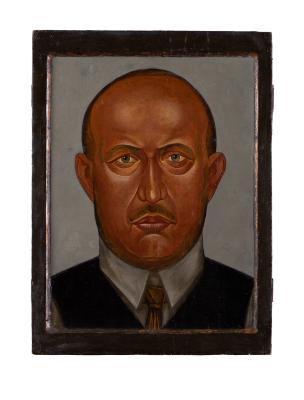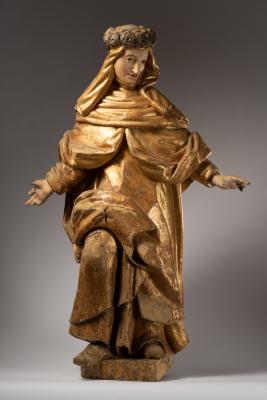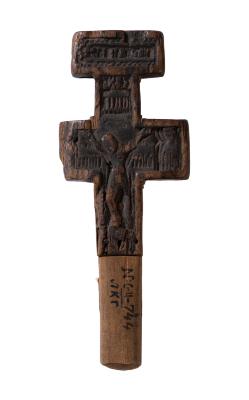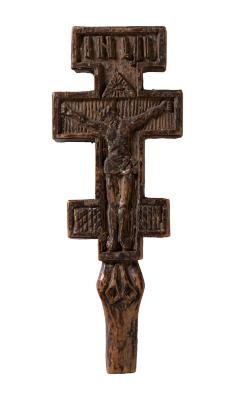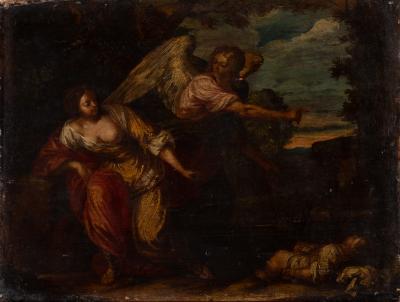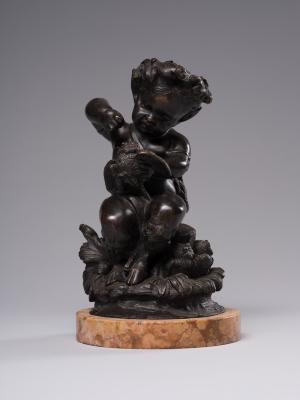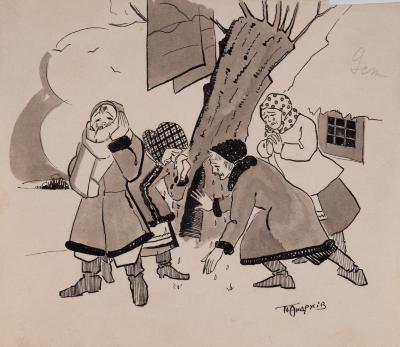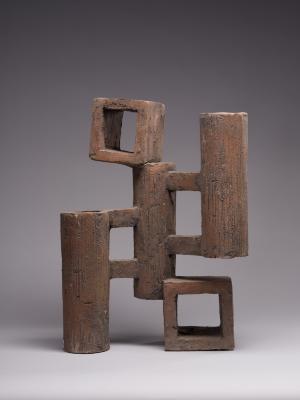The faun playing the black flute is depicted turned three quarters to the left in the center of the composition; another bizarre figure, who embraces the nymph with its left hand and holds a stick in its right one, is depicted on the right next to him. The second nymph that is probably dancing is depicted with its back to the viewers. Bacchanalia is a mystical holiday in honor of the god Bacchus (Dionysus), which spread from the East (Thrace) to the territories of Ancient Greece and Italy. It became particularly popular throughout Italy from the II century B.C. Bacchus was revered as the youngest of the Olympic gods, the deity of viticulture and winemaking, fun, inspiration and ecstasy, as well as the patron of vegetation, and a symbol of the revival of nature. At the beginning of the twentieth century, the interest in ancient themes, which were somewhat forgotten in the 19th century, increased significantly; they began to be perceived somewhat differently, mostly nostalgically. At this time, the art of Ancient Greece was reviewed. Artists from different countries eagerly studied the works of different periods of Greek history and reproduced the impulses of forgotten eras in their works. Jacek Malczewski rarely turned to ancient plots, although he sometimes tried to combine antiquity with modernity, as in the presented work.











